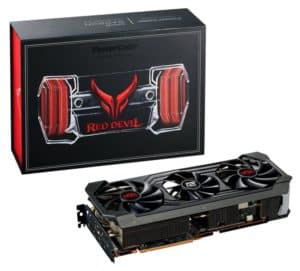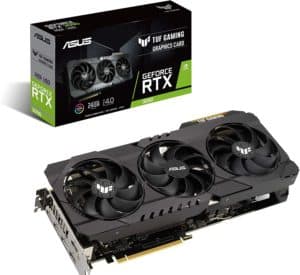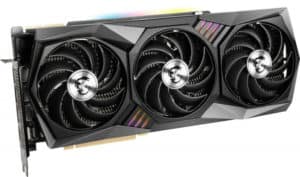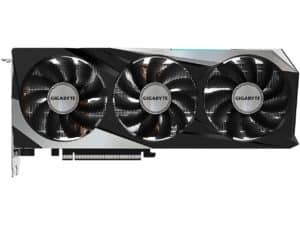Best Graphics Card for Ryzen 5000 Series Processors In 2024
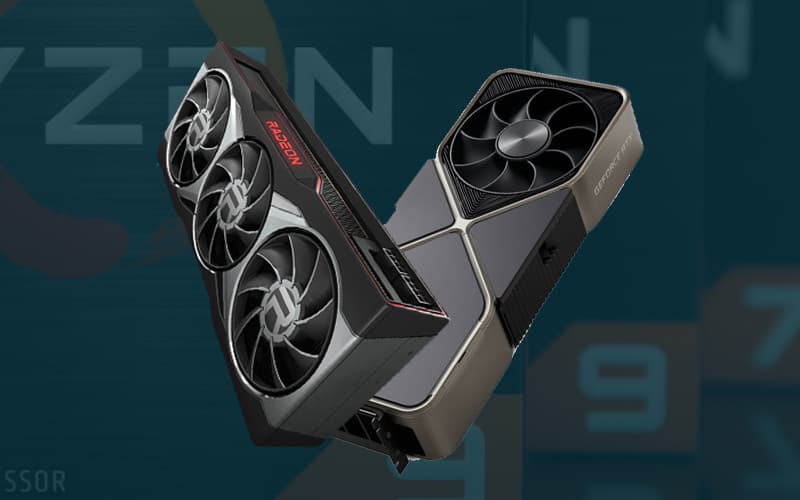
Table of Contents
So, you‘ve just got your hands on a shiny new Ryzen 5000 series processor but you want to pair it with one of the best graphics cards around? You came to the right place. Below, we have listed the best graphics card for Ryzen 5000 series available so you can create a powerhouse PC that’ll be capable of whatever you throw at it.
We’ll also get onto some things to consider when picking out the best graphics card for your Ryzen setup including new AMD Synergies that have been put in place with this generation of processors. This should help you out even further and potentially narrow down your choices.
Products at a Glance
How we picked the best Graphics Card for Ryzen 5000 Series Processors
When looking for the best GPU for Ryzen 5000 Series Processors, we prioritized performance, checking user and pro reviews to see which card came out on top. We also checked out the cooling features and aesthetics, as we know how important these are to gamers. Finally, we tried to incorporate a broad range of budgets.
Product Reviews
- Nice RGB lighting
- Smart Access Memory synergy
- A less costly top end GPU
- Not regarded as powerful as Nvidia counterparts
You might be surprised to see an AMD GPU at the top of our list considering that they’ve been somewhat lacking in performance in the years of old but with new tech developments, it could be the perfect time to pick up an AMD graphics card to pair with a new Ryzen 5000 series chip. One such tech development is the introduction of Smart Access Memory. This aims to provide a clear route from Ryzen CPU to Radeon GPU, boosting the performance of both dramatically.
At this current time, the best AMD Radeon RX 6900 XT variant around is the PowerColor Red Devil. This is because it has all the aspects of what makes a graphics card of this caliber so good as well as the extra frills that take its performance that little bit further. It boasts some pretty nice RGB elements as well as top tier cooling, something you’re going to need if you’re piling the pressure on it by playing the latest AAA games on 4k ultra settings.
There are a number of other 6900 XT cards on the market such as the ASUS TUF Gaming and XFX’s entry which are both solid options and should certainly be considered if you’re not particularly feeling the PowerColor Red Devil we chose as our top selection.
- Incredibly powerful
- Excellent cooling
- No AMD synergies
While you might have been surprised at our best overall selection being AMD, there’s no question that a flagship Nvidia GPU makes it into the top two. It really could be no other than the Nvidia RTX 3090.
The RTX 3090 is the most powerful and priciest selection of the new 30 series range which boasts extremely high clock speeds and enough juice to cope with even the most graphically demanding AAA games. It’s also pegged as one of the best GPUs around for creative work where it excels even more than when gaming, potentially making it the go-to card for video editors and graphic designers alike.
In our opinion, we think the ASUS TUF Gaming version of the Nvidia RTX 3090 is probably the top pick here. It has an Axial-based cooling system which means that air flows through the card much easier. This assists with thermal dissipation and all of this takes place without the noise to match thanks to a dual ball bearing reliant design. Moreover, we’ve mentioned the high clock speed of these cards but this TUF Gaming variant really pushes it to the max with 1770MHz, higher than most other options out there.
- Great RGB lighting
- TRI FROZR 2 cooling
- No AMD Synergies
While the RTX 3080 isn’t an AMD variant and therefore won’t have that Smart Access Memory as standard, it’s right up there in terms of performance, especially when you compare that to the price you’ll be paying for it. It’s far more inexpensive than the RTX 3090 without too many drawbacks.
You’re looking at a graphics card that really is next-gen, more than capable of taking on AAA games at 4k, and with that all-important ray tracing enabled. It’ll also be sitting pretty in your machine for some time thanks to the 10GB of DDR6 VRAM which should be more than enough to deal with the new games that’ll be releasing later down the road.
The RTX 3080 to opt for here is the MSI GAMING X TRIO. As usual, it offers up that MSI quality coupled with the trademark TRI FROZR 2 cooling that’ll keep your GPU feeling cold to the touch even under the heavy loads you’re likely to put it under. Additionally, it’s probably the best looking of the lot too with its black and grey coloring, futuristic lines, and RGB accents that look stellar in any PC build.
- Smart Access Memory synergy
- Cost-effective
- Might lose out to the RTX 3080
Now, we’ve got the ‘Big Navi’ out the way but what about AMD’s more mid-range Radeon RX 6000 series graphics card? Well, with its appearance in this list, we believe the 6800 XT is a solid option for pairing with any of the Ryzen 5000 series CPUs.
Again, like the 6900 XT, the 6800 XT boasts Smart Access Memory potential, giving you even more performance potential than what you’d get right out the box. It’s also priced similar to that of the RTX 3080 making it a direct competitor to the above unit with those added AMD synergies.
This specific variant – the Gigabyte Gaming OC, provides you with some nice added extras over the base AMD model not only aesthetically but also in areas such as cooling. You’ll be able to comfortably achieve 60 FPS at 4K and on ultra-high settings thanks to a game frequency of 2010 MHz and a boost clock of 2250 MHz, as well as 128 MB of infinity cache memory.
Things to consider
AMD synergies
We’ve already mentioned these aspects in our AMD GPU picks above but let’s delve into them further. Essentially, with the introduction of the Ryzen 5000 series CPUs, AMD has been able to create synergies between their processors and their graphics cards. One of these comes in the form of Smart Access Memory which expands data channels, unlocking the full potential of the Radeon RX 6000 series memory to remove any bottlenecks, and increasing overall performance. This is a feature that can’t be unlocked currently by Nvidia GPUs, giving Radeon options the upper hand. However, this is currently being worked on and we could very well see similar tech being introduced in the near future.
Does AMD Ryzen 5000 series have intergrated graphics?
AMD offers the 5000 G series of CPUs that have integrated graphics. For all other CPUs in the 5000 series, you will have to buy a discrete graphics card.
Is AMD Ryzen 5 5000 series good for gaming?
The 5000 series of CPUs offer great performance for gaming, they offer clock speeds from 3.4 – 3.9GHz and boosted speeds up to 4.9GHz. Additionally, some models have 16 cores which modern games are starting to take advantage of. These CPUs will help future-proof your PC setup, especially when paired with the right GPU.
Our Verdict
Overall, if you want the best graphics card to pair with your Ryzen 5000 series processor, it’s really hard not to stay in the AMD family and opt for the Radeon RX 6900 XT. It has those synergies right out the box which further enhance performance and costs a bunch less than Nvidia’s top selection – the RTX 3090. We think that the PowerColor Red Devil is the top selection of the 6900 XT variants due to its brilliant cooling and overall aesthetics. Obviously, if you just want raw power and don’t really care how much it costs then maybe the ASUS TUF Gaming RTX 3090 is the one for you. It has been performing exceptionally well both in gaming and creative aspects and one you certainly shouldn’t shy away from just because it doesn’t share that same AMD architecture.
Now you know which graphics card you’re wanting to pair your 5000 series CPU with, what about RAM? We’ve got another whole article dedicated to that which you can see right here.


